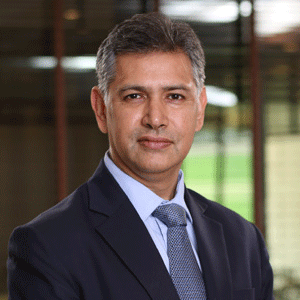THANK YOU FOR SUBSCRIBING

Allied Telesis: Network Solutions for People, Organizations, and 'Things'

 Jakub Duch, Executive Officer & VP International Sales
Jakub Duch, Executive Officer & VP International SalesBy 2020, the number of IoT devices is expected to exceed 50 billion devices. This number of devices poses a real challenge for efficient infrastructure management and its security. Without a certain level of management automation and security, the new IT world we are building will become unmanageable by people.
Allied Telesis delivers an array of intelligent technologies such as AMF (Autonomous Management Framework) to manage network infrastructure for organizations. AMF is an embedded technology native to their networking products like switches and firewalls. It manages and controls networks—both small and large—and makes deployment of networks simple and effortless and ensures rapid service restoration in the event of a failure. Allied Telesis is currently extending its AMF technology to third party end points like security cameras to deliver simplified configuration.
The company offers end-to-end solutions and products within the data center and enterprises and also assists clients in the IoT space. Allied Telesis’ portfolio of enterprise and industrial products with services includes EtherGrid and the IE200/300 Series.

Allied Telesis looks at integrating SDN technology with other application vendors to deliver a complete end-to-end solution with enterprise security SDN
EtherGrid is a platform that caters to the needs of organizations for a network, storage, and compute solution. “It enables to leverage our experience in the networking space and simplify the customers’ environment which is particularly for those organizations that are looking at IoT,” illustrates Duch. The IE300 series of industrial switches extends Allied Telesis’ range of industrial products and features the same embedded operating system as the rest of the switching portfolio. The IE300 is designed for performance management and meets the industrial requirements of IoT environments which include critical infrastructure, smart city infrastructure, and connecting to ‘things’ like transport networks.
Allied Telesis, a lead partner in the Smart Cities Council (SCC) has joined hands with local governments and other government bodies for the connectivity of ‘things’ like traffic monitoring platforms for the development of smart cities. However, this move towards smarter cities and IoT has made security a critical concern. The linkage between the IoT connected devices exposes them to security and safety vulnerabilities. Allied Telesis offers Software Defined Network (SDN) technology to support network orchestration and improve the security with an IoT environment. Its SDN technology can integrate with OpenFlow switches and AMF for increased network security and management. The SDN technology reduces the deployment time and operational cost related to the networking management. In addition to using SDN for security, the company’s portfolio of security appliances offers a hardware platform, operating system and integrates security technologies from leading organizations like Kaspersky, Emergins Threats, and Procera.
Allied Telesis also helps in management and orchestration of connected devices, which has become a challenge for organizations today. The company plans to deploy its services around the AMF technology to address this challenge. Duch believes that there is a need for more diverse range of products for industrial applications in the IoT environment. Allied Telesis thus anticipates a much larger industrial networking portfolio around 2019 and looks at integrating SDN technology with other application vendors to deliver a complete end-to-end solution with enterprise security SDN.


Allied Telesis News

Allied Telesis: Optimising Wireless Technology
I agree We use cookies on this website to enhance your user experience. By clicking any link on this page you are giving your consent for us to set cookies. More info














Can you explain the “hybrid wireless LAN solution” and what inspired its development? What sets it apart from other wireless solutions?
Allied Telesis has introduced the world’s first hybrid WLAN solution, designed to optimise wireless networking in enterprise environments. This innovative solution allows simultaneous multi-channel and single-channel WLAN operations using a single access point (AP) design. Network administrators can tailor their network to their specific needs, combining the performance advantages of both architectures.
For instance, in a traditional office setup with four access points, all operating on the same channel, this represents the single-channel architecture, which is relatively uncommon. In contrast, the multi-cell architecture employs four access points, each on different channels or frequencies. This eliminates interference and ensures greater bandwidth availability when multiple devices are connected. While this multi-cell approach offers benefits, it can lead to disconnections and disruptions as devices move between access points.
This is where our hybrid solution comes into play. By combining the strengths of both architectures, we offer a unique and comprehensive solution. With multiple radios in our access points, we enable network segmentation. Stationary devices in an office can benefit from the multi-cell architecture, guaranteeing higher bandwidth. Meanwhile, mobile devices in constant motion can utilise the single-cell architecture for uninterrupted connectivity. This hybrid approach maximizes both mobility and bandwidth, catering to a wide range of user needs.
How will this new technology impact businesses and organisations that rely on wireless networks, and what specific benefits can they expect from its implementation?
This hybrid wireless LAN solution holds great promise for businesses and organisations that heavily depend on wireless networks, especially in sectors like IoT, manufacturing, and logistics. In environments where devices are constantly in motion, such as warehouses with automated vehicles, this technology can significantly improve efficiency.
Consider an example in a vehicle manufacturing plant that uses automated guided vehicles (AGVs). These AGVs move materials across the factory, but with a multi-cell architecture, they could experience disconnections as they move between access points. This disrupts operations and affects efficiency.
With the hybrid solution, such disruptions are minimized. The AGVs can smoothly seamlessly traverse through the coverage area of multiple access points without any disconnection or reconnection, as from the AGV’s perspective it is not seeing the multiple AP’s but a single Access point which has a very vast coverage area. Allied Telesis uses the term “Channel Blanket” to describe this.
This technology’s advantages become increasingly evident as more devices and sensors rely on wireless networks in industrial settings.
Moreover, Allied Telesis offers a one-stop solution for all networking needs. We provide a wide range of network infrastructure components, ensuring seamless integration and interoperability. This eliminates the complexity often associated with integrating solutions from multiple vendors and enhances the overall user experience.
How does the hybrid wireless LAN solution address security and data privacy concerns, especially when managing different types of wireless clients or devices?
In terms of security, the hybrid wireless LAN solution maintains robust standards and protocols, whether it operates in single-cell or multi-cell mode. We comply with industry requirements, including IEEE standards and encryption and authentication protocols such as WPA2 and WPA3. Additionally, we support features like RADIUS authentication and captive portals for enhanced security.
One unique security feature we offer is the Autonomous Management Framework (AMF) Security. The Allied Telesis AMF Security (AMF-Sec) Controller is a powerful security solution with an intelligent, fully-featured SDN controller. With AMF Security, we extend our capabilities to integrate with leading security vendors, including endpoint security, SIEM, antivirus, and firewall providers.
When these third-party security solutions identify a threat, they communicate with AMF Security, which has comprehensive control over the network. In response, AMF Security can isolate or disconnect the affected device or port, whether it’s wired or wireless. This rapid response capability is vital for mitigating security threats effectively.
Overall, the Hybrid Wireless LAN solution not only offers flexibility and performance but also maintains a high level of security to safeguard sensitive data and protect against emerging threats.